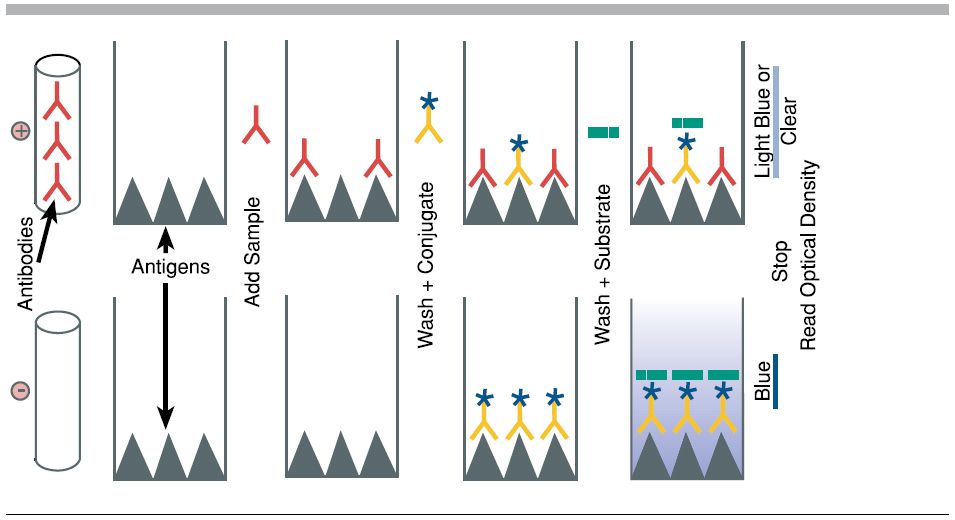Competitive ELISA: Basic Principles
The central event of competitive ELISA is a competitive binding process executed by original antigen (sample antigen) and add-in antigen. The procedures of competitive ELISA are different in some respects compared with Indirect ELISA, Sandwich ELISA and Direct ELISA. A simplized procedure list is as follow:
- Primary antibody (unlabeled) is incubated with sample antigen.
- Antibody-antigen complexes are then added to 96-well plates which are pre-coated with the same antigen.
- Unbound antibody is removed by washing the plate. (The more antigen in the sample, the less antibody will be able to bind to the antigen in the well, hence "competition.")
- The secondary antibody that is specific to the primary antibody and conjugated with an enzyme is added.
- A substrate is added, and remaining enzymes elicit a chromogenic or fluorescent signal.
For competitive ELISA, the higher the sample antigen concentration, the weaker the eventual signal. The major advantage of a competitive ELISA is the ability to use crude or impure samples and still selectively bind any antigen that may be present.
(Note that some competitive ELISA kits include enzyme-linked antigen rather than enzyme-linked antibody. The labeled antigen competes for primary antibody binding sites with your sample antigen (unlabeled). The more antigen in the sample the less labeled antigen is retained in the well and the weaker the signal).
It is common that the antigen is not first positioned in the well.
Competitive ELISA advantages:
- High specificity, since two antibodies are used the antigen/analyte is specifically captured and detected
- Suitable for complex samples, since the antigen does not require purification prior to measurement
- Flexibility and sensitivity, since both direct and indirect detection methods can be used.

